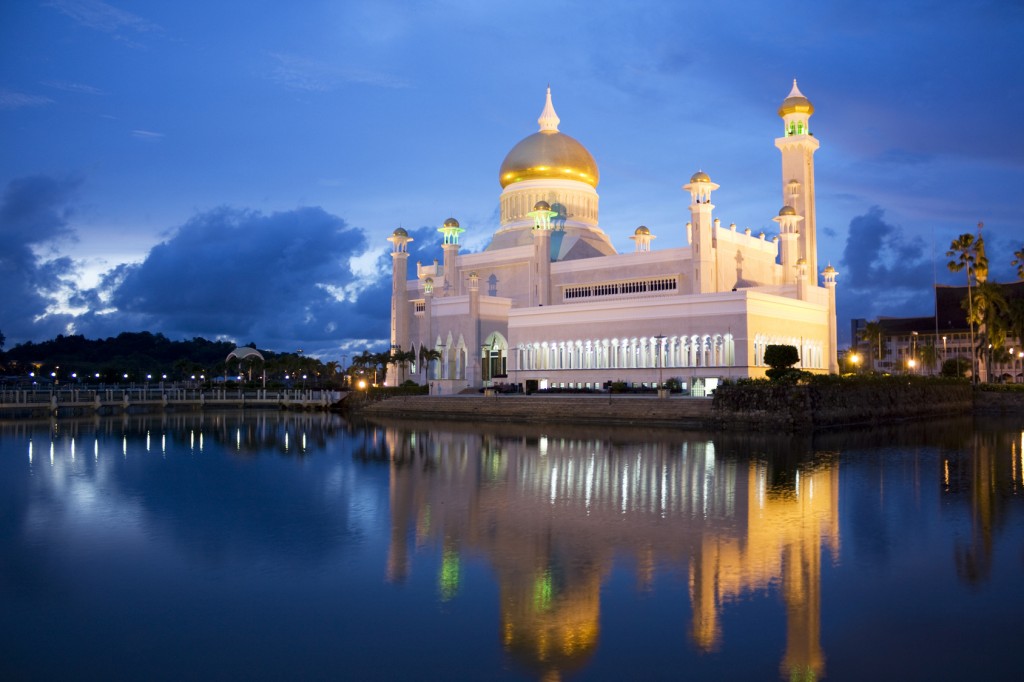The world’s most beautiful mosques (Part II):
11) Ubudiah Mosque, Malaysia
Built between 1913 and 1917, this place of worship in the royal town of Kuala Kangsar, Peninsular Malaysia, is often touted as the country’s most beautiful mosque. With four minarets and a golden dome, it was designed by Arthur Benison Hubback, a British architect who was also behind the Kuala Lumpur railway station.
12) Sultan Salahuddin Abdul Aziz Shah Mosque, Malaysia
Malaysia’s largest mosque can be found in Selangor, Peninsular Malaysia, and is built in modernist Malay style. It has inscriptions by an Egyptian calligrapher alongside blue-stained glass windows, and its aluminium dome is covered with steel panels engraved with verses from the Koran. It has the capacity to accommodate 24,000 worshippers.
13) Faisal Mosque, Pakistan
The world’s fourth largest mosque stands against a backdrop of the Margalla Hills in Pakistan’s capital city, Islamabad. Its contemporary design was conceived of by Turkish architect Vedat Dalokay, and its eight-sided concrete shell is inspired by a Bedouin tent and the cubic Ka’aba in Mecca. The Faisal Mosque is described in the book The Kite Runner by Khalid Hosseini.
14) Wazir Khan Mosque, Pakistan
Also in Pakistan, in the north-eastern city of Lahore, is the Wazir Khan mosque, built in the 17th century under the reign of Shahabuddin Muhammad Shah Jahan. On the “tentative” list for Unesco World Heritage Site status since 1993, it is built in cut and dressed bricks laid in kankar lime, with some red sandstone in the gate and the transept, and is adorned with fresco paintings and tiles, with the predominant colours lajvard (cobalt), firozi (cerulean blue), green, orange, yellow, and purple. (Picture: Alamy)
15) Badshahi Mosque, Pakistan
Lahore is not short of beautiful mosques. The Badshahi Mosque, commissioned by the sixth Mughal Emperor Aurangzeb in the 17th century, is built in red sandstone and marble, and has a courtyard spreading 279,000 sq ft. The mosque’s large minarets were supposedly used for storing zamburahs – light guns – in the Sikh civil war in 1841, while the British used the building as a military garrison during the period of the Raj. Repairs during the 20th and 21st centuries have seen the building restored to a much finer condition than during its time for military use.
16) Taj-ul-Masajid – Bhopal, India
With a name that translates as “Crown among Mosques”, this place of worship in Bhopal has a pink façade, two 18-storey high octagonal minarets with marble domes, and a double-storeyed gateway. All of which mean it is not surprising that this is India’s largest mosque, with enough space for 175,000 worshippers. (Picture: Abhishek727Abhishek Mishra)
17) Jama Masjid, Delhi
This striking red sandstone and marble mosque, with three domes and two minarets, was built under the rule of Mughal emperor Shah Jahan between 1644 and 1656. In 2006, two bombs were set off after Friday prayers in the mosque’s courtyard, which left several people injured, and in 2010, two tourists were injured after gunmen shot at a bus stop near the mosque’s third gate.
18) Sheikh Zayed Grand Mosque, Abu Dhabi
This brilliant white place of worship in the UAE’s capital is home to the world’s largest hand-knotted carpet, crafted by 1,200 artisans, and a 12-tonne crystal chandelier. (Picture: AP)
19) Masjid Sultan Qaaboos, Oman
Its position next to a motorway in Muscat might not be conducive to calm, but once guests are inside the Sultan Qaaboos mosque’s gardens, thoughts of the tarmac pummelled by white 4x4s outside will be gone. With peaceful sahn (courtyards), elegant riwaqs (arcades) and mesmerising muqanas (vaulted panelling), this place of worship is one of the most impressive buildings in this Gulf country. Its central minaret is 91.5 m (300 ft) tall, and the main prayer hall has a Persian carpet that took 600 women four years to weave.
20) Great Mosque of Samarra, Iraq
This unique 9th-century mosque near Baghdad in Iraq was built when Samarra was the capital of the Abbasid Empire, but was destroyed in 1278. Its idiosyncratic “Malwiya” minaret remains, however, with its ascending spiral conical design, 52 metres high and 33 metres wide at the base. It was damaged by an explosion in 2005, and is currently on Unesco’s list of endangered world heritage sites. The Foreign Office advises against all travel to Iraq.
Source: Telegraph.co.uk






























